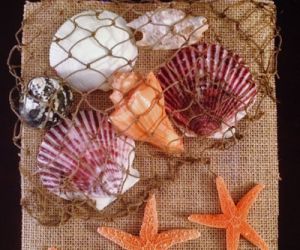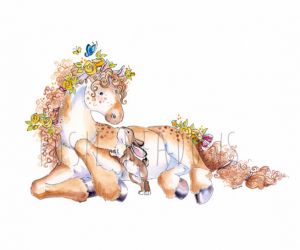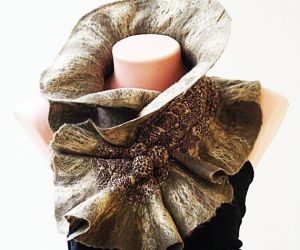Art & Craft Show season is upon us, and I thought it to be a good time to hear from an expert on marketing and art shows. Following is an excellent, informative article by Kelli Swan from EzineArticles.com.
Marketing Your Art Though Art Shows and Festivals
By Kelli Swan
If you are an emerging artist, one of the easiest ways to market your work is to sell it yourself. And one of the best ways to do this is to exhibit in Art Shows and Festivals. Following are some hints and ideas for getting started:
Finding the Shows
Many states and localities have Art Leagues and Associations which list local Art Shows. Make sure to start with these organizations. For nationwide listings, there are several great websites with show listings. A few to try are: Sunshine Artist, artfairsource.com or festivalnet.com. Once you identify the shows that interest you, you can write or email the contact person of each show for an application. In most cases you will be looking for shows that take place 6-12 months out, as the deadline for entries is often quite early.
Filling out Applications
The first thing to note on an application is the deadline. Many shows will not accept entries received after that date. The application will outline the show regulations and fees required. Art Shows vary extensively in rules and regs. Most of the better (i.e. potential for sales) shows limit artwork exhibited to that which is hand-made. Any reproductions, even 2-dimension prints, may be limited or not permitted at all. Make sure to read the application completely before applying to the show!
A Note about Fees
In most cases you will need to send two separate fees with the Art Show application. The first is known as a “Jury Fee” or “Screening Fee.” This fee is non-refundable, and must accompany the application. Jury Fees generally range from $5 to $30.
The second fee is the “Booth Fee.” This is the fee you pay for space at the show. A standard booth space is 10 foot by 10 foot. Depending upon the size and quality of the event, the Booth Fee may range from $25 to $400 or more. Some shows require this check upfront with the application. Other shows request the Booth Fee upon your acceptance into the show.
After the jury has reviewed your application, you will receive one of three replies: A Letter of Acceptance, A Letter of Rejection, or a Stand-by (Wait List) Notice. The first two replies are self-explanatory. The “Wait List” letter simply means that your work did not quite make the first cut, however you stand a chance of being called in to do the show should someone else cancel. It is your choice to remain on the Wait List or to withdraw from the show altogether.
Samples of Your Work
In most cases, some form of samples of your work will be required with the application. At one time 35mm slides were the sample for most shows requested. More and more shows are now starting to request electronic scans. Either way, quality is requirement number one. Whenever possible, you should spend the money to have your art professionally photographed. Remember that this is the only view the art show jury will see of your work. Two dimensional artwork should fill the slide area – no matting or framing should be visible. Three dimensional artwork should have a very simple background which compliments the art.
Many shows, particularly outdoor shows, will require a “Booth Slide” or photo as well. In this case the art show is looking for a picture of your entire display. It goes without saying that this picture should look as professional as possible. To get a good shot of an outdoor display with canopy, try taking the photo on a slightly overcast day (to eliminate hard shadows) and leave the top of the canopy for nice lighting. Your display should be clean, simple and free of clutter.
Booth/Display
Canopy — If you are planning to do outdoor shows, you will need a canopy to protect you and your work from the elements. This is not the place to save money. Buy the best canopy you can afford. Talk to any artist who has ever lost $1,000’s of dollars of work to wind, rain, etc. and he/she will confirm this. Two of the better canopies are the TrimLine Canopy by the Flourish Company and the Light Dome Canopy. Canopies are offered with many options, including see-through material for skylights and doors, awnings, carrying cases, and more.
Display Panels — For two dimensional art, you will want standing panels so that you can hang your framed pieces. You may also want a “flip bin” or two for matted, unframed prints. The panels should be fabric-covered, as plain grids tend to have an unprofessional look. Some of the best panels come from ProPanels.com. This company also makes pedestals for displaying three dimensional work. The Flourish Company makes panels which attach to their canopy.
Weights — Weights are a necessity for canopies. You never know when the wind will kick up, and canopies can turn into flying parachutes. All four legs of the canopy should be weighted. Sand bags and cement blocks work, but a nicer look can be achieved using 3?-4? pvc pipe. Just cut 2-3? sections of pipe. Cap one end and fill with either cement or sand. Then cap the other end with a screw eye hook in the cap. This way you can secure the weight to both the top of the canopy rails (using a rope) and the bottom of the canopy legs (using utility ties.)
Weather — Make sure to plan for the elements! This may mean rain gear, sunscreen, extra clothes and the like. Also, your art work should be transported/stored plastic bins as opposed to cardboard. Consider purchasing a heavy duty dolly. Not only will this make getting your display from the vehicle to the display area easier, the dolly can also serve as an above ground table for storing artwork behind your booth.
Hotel arrangements
If you are planning to exhibit out of town, make those hotel arrangements as soon as you are accepted into the show. While an art show alone usually does not fill all the local inns, you may find that other events are in town for the weekend to coincide with the art show. This may make finding last minute lodging difficult.
Payments
Consider in advance what forms of payment you will accept. While “cash only” is a nice arrangement for the artist, it generally results in lost sales. If you plan to accept checks, make sure to check identification when accepting the check. If possible, try to get a merchant account before the show so that you can accept major credit cards. This will definitely improve your chances of sales. Most banks offer merchant accounts, though these days you will probably find better terms and pricing online.
Marketing Materials
Even if people are interested in purchasing your work not all customers will make purchases at the show itself. It is important to let them know how to reach you later. At very least, have professional business cards ready. (Try vistaprint.com, overnightprints.com or gotprint.net.) If possible, also take flyers, brochures, price lists and other materials which you can hand out. And don’t forget sales slips/receipts.
An “Artist Statement” (telling about you and your work) should be posted in your booth. People want to learn about you!
Attitude and Presentation
One the day of the show, make sure to SMILE! Purchasing artwork is a joyful occasion for most people. Few will transact with a grouch! It is also important to make a good impression on the show committee. One sure way to *not* get into future shows is to growl at a committee member. One last note, dress comfortably, but neatly. The paint-stained clothes should be left at home. You are in “selling” mode now and should dress accordingly.
Artist and Graphic Designer Kelli Swan specializes in black and white pencil drawing and search marketing: Pencil Drawings by Kelli Swan, Graphic Design, SEO and SMM.
Article Source: http://EzineArticles.com/?expert=Kelli_Swan
http://EzineArticles.com/?Marketing-Your-Art-Though-Art-Shows-and-Festivals&id=109619
Related articles
- So, you think you want to enter an art show eh? (arweninspirationsarw.wordpress.com)
- The Business of Art & Crafts (cottonridgellc.com)
- Jewelry Display Ideas For Craft Shows (cottonridgellc.com)
- DIY Shadow Box Earring Display Rack For Craft Shows (cottonridgellc.com)







